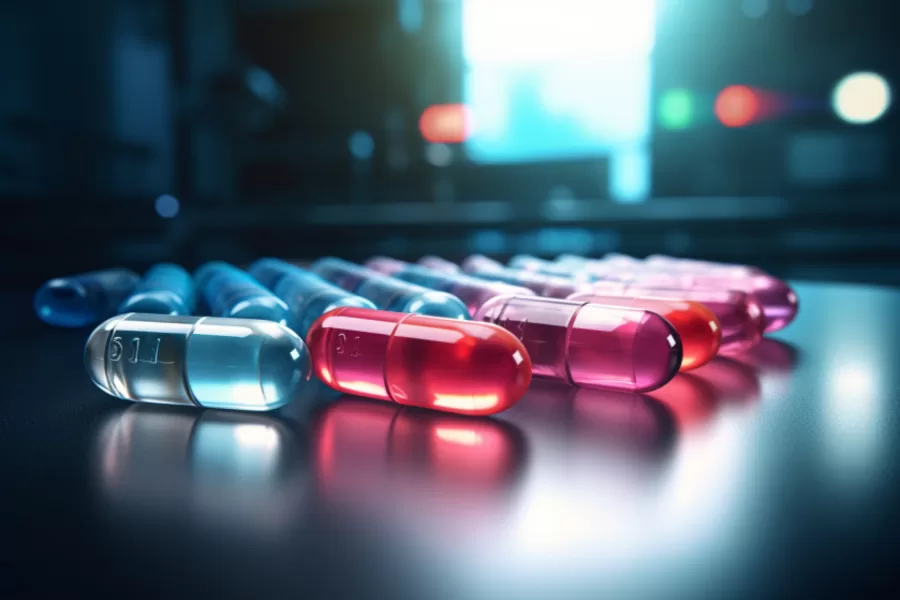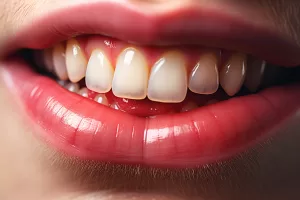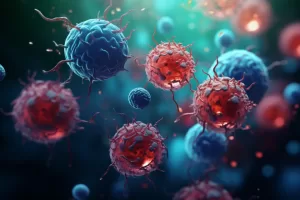Amoxil is an amoxicillin generic, a beta-lactam antibiotic of the penicillin group. It covers many common bacteria that cause infectious diseases, such as Streptococcus or Enterococcus. It also can effectively treat Clostridium species; Haemophilus influenzae; Actinomyces, Shigella, and Salmonella spp.; some Escherichia coli, and Corynebacteria species.
Antibiotic resistance is a huge issue that is growing and threatens global healthcare. As amoxicillin is one of the antibiotics used for first-line treatment, we researched its efficacy against various infections. This review is about amoxicillin and resistant bacteria.
Understanding Amoxicillin (Amoxil)
The Beecham Group developed the molecule of amoxicillin in the 1960-s. It was one of the several semisynthetic derivatives of 6-aminopenicillanic acid (6-APA). The medication was created by two British doctors: John Herbert Charles Nayler and Anthony Alfred Walter Long.
The medical use of the antibiotic began in 1972. In 1974, the drug was approved for use in the USA to become the 40th most often prescribed medication in 2020. WHO included amoxicillin in its Model List of Essential Medicines.
The chemical name of amoxicillin is α-amino-p-hydroxybenzyl penicillin which reflects that the medication is amino-penicillin, acquired through adding an additional amino group to the molecule of the drug.
Mechanism of action
Amoxicillin is a beta-lactam antibiotic. This class has a bactericidal effect which means it kills pathogenic cells. The mechanism of action is founded on the drug’s molecules’ ability to attach to penicillin-binding proteins, which inhibits the process called transpeptidation and prevents the formation of cell walls. This causes the activation of the bacterial cell wall’s autolytic enzymes and the cell wall’s lysis, which kills the bacterial cell.
What is Antibiotic Resistance
Antimicrobial resistance, or AR (abbreviated), is an occurrence when the bacteria are not susceptible to the effect of an antibiotic. Therefore, the disease is not treatable with the chosen remedy; it can acquire a persistent character and various complications. The CDC says resistant bacteria cause more than 2.8 million infections a year in the US.
How bacteria develop resistance to antibiotics
Bacteria can become resistant to antimicrobial drugs naturally, by mutation and the mechanism that is called “horizontal gene transfer”. When close to another pathogen, a microorganism can pull in fragments of its DNA and incorporate them into its own genetic code. Some bacteria are very adapted to medications and learn to withstand them over time: an example of that would be Staphylococcus aureus. As of today, some strains of it are resistant to strong antimicrobial drugs, such as linezolid or vancomycin.But the biggest boost to AR development in bacteria is the improper use of antibiotics. When people take medications that are not indicated for the disease they have, ignore doctor’s recommendations, or do not complete the treatment course, some of the bacteria are not eradicated. The pathogens that survived become more adapted to the medication and can withstand its effect.
Antibiotic resistance is a serious threat to public health because it creates untreatable diseases. The disease that cannot be treated by standard protocols, leads to more complications, higher hospital bills, and increases load on public healthcare. And because of globalization, persistent infection can easily travel around the world and spread, creating a pandemic.
Amoxil and Resistant Bacteria
After penicillin was discovered and widely used, the most common pathogens, such as Staphylococcus and Pneumococcus, quickly became resistant to it. Thanks to an additional amino group, Amoxil and other brands of amoxicillin help with antibiotic resistance to penicillin.
Some pathogens produce an enzyme called beta-lactamase which makes these bacteria amoxicillin-resistant. To solve this, the antibiotic is often combined with clavulanic acid or sulbactam. Those are beta-lactamase inhibitors allowing the use of Amoxil against beta-lactamase-producing microorganisms.
However, amoxicillin is not a one-fits-all solution, and the overuse of antibiotics plays its part. For instance, amoxicillin is one of the standard medications for UTI treatment. As a result, we have a rise in amoxicillin-resistant UTIs. According to a 2019 review, E. coli caused 62% of urinary tract infections and 76% of bacterial isolates were resistant to amoxicillin.
Misconceptions of Antibiotics
Here is a list of common misconceptions about antibiotics, with explanations.
- If you have an infection, you can take any antibiotic. No, antibiotics have a spectrum, and they only work against bacterial infections.
- If you feel better, you can stop taking antimicrobial medications. No, you should always fulfill your treatment to ensure full eradication of the bacteria. If you fail to do so, the bacteria that survived will develop resistance to an antibiotic, and the disease will return.
- The antibiotics do not work because the body is used to them. AR occurs in pathogens, not in the body. It is the bacteria that do not react to medication as used to.
- If a certain antibiotic was prescribed to someone else with a similar health issue, I can take it as well. No, you should always consult a healthcare professional to get a precise diagnosis and correct treatment plan. Similar symptoms may indicate different diseases and different pathogens.Taking the wrong medication will increase the chances for your condition to become persistent.
- There are low AR rates in the place I live in; I may use antibiotics as I want without trouble. This is wrong: because of globalization, antibiotic-resistant infections can travel across countries and even continents.
- AR in unstoppable. Not exactly true. Bacteria become resistant naturally, yes, but the biggest AR driver is how we use antibiotics.
Preventing Antibiotic Resistance
We all have our part in keeping resistant bacteria at bay. Here is what we can do to prevent antibiotic resistance.
Prevention of the infections
If people do not fall sick, they will not need antibiotics. Reduced use of antibiotics slows AR development down. Vaccinations, good hygiene, and proper social measures (like wearing a mask if you are unwell, sneezing into your elbow, and keeping your distance) help to avoid catching an infection in the first place.
Healthcare professionals
It is the doctor’s role to prescribe antibiotics responsibly. The best approach to the matter is to avoid the use of antibiotics unless the necessity is proven; prescribe antibiotics according to sensitivity tests; keep the latest broad-spectrum antibiotics and a last-line treatment.
How to use antibiotics correctly
The patient’s responsibility is to use antibiotics properly:
- Never try to prevent a disease with antibiotics;
- Tkae your antimicrobial medications exactly as prescribed;
- Always complete a full treatment course;
- Never save antibiotics or share them with other people;
- Never take antibiotics without a doctor’s prescription.
Summary
Amoxicillin is a bactericidal antibiotic beta-lactam antibiotic. Being more effective than penicillin, it can help treat penicillin-resistant infections, especially when paired up with beta-lactamase inhibitors.
A careful and responsible approach to antimicrobial therapy is necessary to reduce the speed of global AR development.
FAQ
What bacteria are resistant to amoxicillin?
Bacteria sometimes become more resistant after improper treatment with amoxicillin. Escherichia coli can be an example.
How do you treat amoxicillin-resistant bacteria?
Doctors will prescribe alternative antibiotics or a combination of them.
Can bacteria become resistant to amoxicillin?
Yes, the wide use of amoxicillin causes the rise of resistance.
What happens if you are resistant to amoxicillin?
The doctor will prescribe alternative therapy without the use of beta-lactams.




